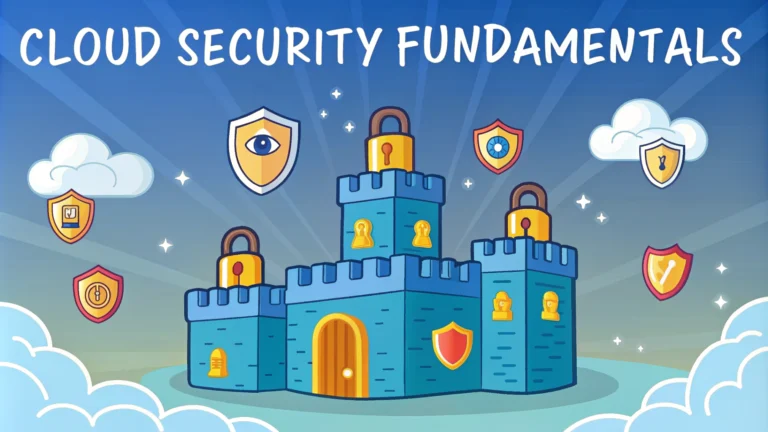Cloud security fundamentals play a key role in modern penetration testing practices, as organizations increasingly move their infrastructure to cloud environments.
Key Cloud Security Concepts for Penetration Testers
Understanding the shared responsibility model between cloud providers and customers sets the foundation for effective cloud penetration testing.
- Infrastructure as a Service (IaaS): Testing focuses on virtual machines, networks, and storage
- Platform as a Service (PaaS): Testing targets application runtime environments and databases
- Software as a Service (SaaS): Testing limited to application configuration and user access controls
Common Cloud Attack Vectors
- Misconfigured storage buckets
- Weak Identity and Access Management (IAM) policies
- Insecure APIs
- Container vulnerabilities
- Exposed credentials in configuration files
Essential Cloud Penetration Testing Tools
| Tool | Purpose |
|---|---|
| CloudSploit | AWS, Azure, GCP security scanning |
| Pacu | AWS exploitation framework |
| ScoutSuite | Multi-cloud security auditing |
Cloud Penetration Testing Best Practices
- Obtain explicit permission from cloud providers before testing
- Review cloud service provider’s penetration testing policies
- Document all testing activities and findings
- Use dedicated testing accounts separate from production
Cloud-Specific Testing Methodology
- Reconnaissance of cloud resources and services
- Identity and access control assessment
- Storage configuration review
- Network security analysis
- Application security testing
Contact major cloud providers’ security teams before testing:
Risk Mitigation Strategies
- Implement least privilege access controls
- Enable multi-factor authentication
- Encrypt data at rest and in transit
- Regular security monitoring and logging
- Automated security scanning and compliance checks
Testing cloud environments requires a different approach than traditional on-premises infrastructure, focusing on provider-specific security controls and compliance requirements.
Advanced Cloud Testing Scenarios
- Serverless function security assessment
- Container orchestration platform testing
- Cloud-native application testing
- Cross-account privilege escalation
- Multi-cloud environment testing
Compliance and Regulatory Considerations
Cloud penetration testing must align with various regulatory frameworks and industry standards.
- GDPR compliance validation
- HIPAA security requirements
- PCI DSS cloud security controls
- SOC 2 attestation support
- ISO 27001 certification requirements
Emerging Cloud Security Challenges
DevSecOps Integration
- Continuous security testing automation
- Infrastructure as Code (IaC) security validation
- CI/CD pipeline security controls
Zero Trust Architecture
- Identity-based access verification
- Microsegmentation testing
- Continuous trust evaluation
Conclusion
Successful cloud penetration testing requires understanding cloud-specific architectures, security controls, and compliance requirements. Organizations must adapt their testing methodologies to address unique cloud security challenges while maintaining compliance with provider policies and regulatory frameworks. Regular testing, combined with automated security controls and continuous monitoring, helps ensure robust cloud security posture.
Additional Resources
- Cloud Security Alliance (CSA) Guidelines
- NIST Cloud Computing Security Reference
- OWASP Cloud Security Testing Guide
- Provider-specific security documentation
FAQs
- What is cloud penetration testing?
Cloud penetration testing is a security assessment method that evaluates cloud infrastructure, applications, and services by simulating real-world cyberattacks to identify vulnerabilities and security weaknesses. - Do I need permission to perform penetration testing on cloud services?
Yes, you must obtain explicit permission from both the cloud service provider (AWS, Azure, GCP) and your organization before conducting penetration testing. Most providers have specific processes and forms to request authorization. - Which areas should be covered in cloud penetration testing?
Cloud penetration testing should cover identity and access management (IAM), storage security, network security, application security, data encryption, API security, and container security. - What are the key differences between traditional and cloud penetration testing?
Cloud penetration testing involves testing shared responsibility models, cloud-specific services, APIs, and virtualized infrastructure, while considering multi-tenancy environments and cloud provider boundaries. - What tools are commonly used for cloud penetration testing?
Common tools include CloudSploit, Scout Suite, Prowler for AWS, Azure Security Scanner, CloudMapper, and traditional tools like Nmap, Burp Suite, and Metasploit adapted for cloud environments. - How often should cloud penetration testing be performed?
Cloud penetration testing should be performed at least annually, after major infrastructure changes, before compliance audits, and when implementing new cloud services or applications. - What are the main compliance requirements related to cloud penetration testing?
Major compliance frameworks requiring penetration testing include PCI DSS, HIPAA, SOC 2, ISO 27001, and GDPR, each with specific requirements for testing scope and frequency. - What are the common attack vectors in cloud environments?
Common attack vectors include misconfigured storage buckets, weak IAM policies, insecure APIs, unpatched vulnerabilities, insufficient logging, and improperly secured container deployments. - How can organizations prepare for cloud penetration testing?
Organizations should inventory cloud assets, define testing scope, obtain necessary approvals, prepare rollback procedures, and ensure proper monitoring is in place during testing. - What are the limitations of cloud penetration testing?
Cloud penetration testing is limited by cloud service provider restrictions, shared responsibility boundaries, multi-tenant environments, and the dynamic nature of cloud infrastructure.







